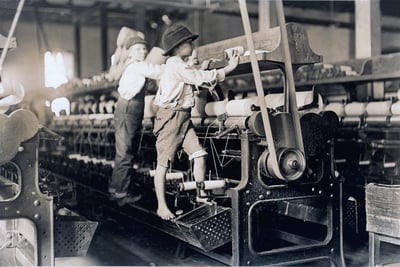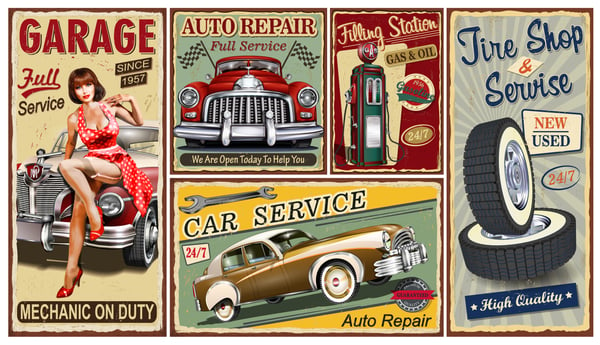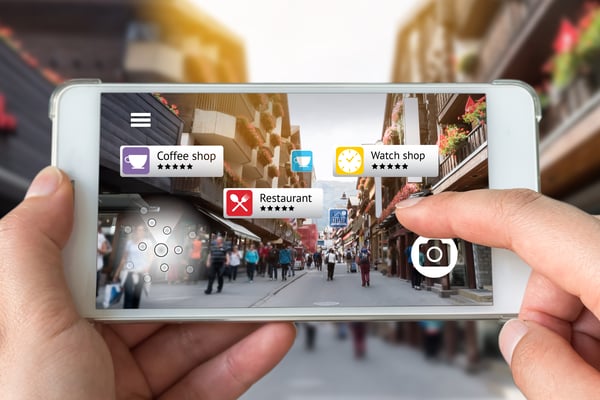The History Of Marketing: From Outbound To Inbound
The History Of Marketing: From Outbound To Inbound
Get weekly
HubSpot Updates
Sometimes, we need to take a step back and look at where we’ve come from in order to determine how and why we are heading in a particular direction. Marketing has been around for hundreds of years, evolving and expanding its principles and functions, but many businesses still don’t recognise the need for an inbound approach, simply believing that their product or service will generate demand through old fashioned tactics and strategies.
Technology and globalisation have entirely changed the playing field, causing many organisations to fade and vanish while others have revolutionised their business models and ensured the longevity of their brands.
Developed your film lately?

In this blog, we will explore the history of marketing and discuss the driving factors that have challenged companies to adapt their marketing from being solely product oriented to focusing on the value of long-term relationships and sustainable growth.
At the beginning…
… sellers wanted the ability to differentiate their offerings. Whether trading or bartering, vendors needed a way to show consumers that their product or service was of higher quality and value than that of their competitors. There is evidence that the civilisations of ancient China and India used labels and branding, which helped customers to acquire a certain level of status from purchasing specific goods.
In Medieval Europe, the periodic markets that did the rounds in town squares were replaced with more permanent shops that began to trade daily.

The Industrial Revolution in the 18th and 19th centuries made the buying and selling of goods much easier. New markets emerged and competition became more challenging.

Improved transport infrastructure and the development of mass media reformed the approach that businesses took when trying to reach customers. By the 1940s, increasing sales was essential to the survival of any organisation. Persuading the customer that your products and services were better than any other contender on the market was crucial, and by the 1960s specialist marketing services were being implemented with increasing resources dedicated to the task.

The 80s and 90s were all about the brand; consumers sought to express their individuality through their purchases – kind of like they did in ancient China but with the power of MTV. The proliferation of the internet in the 2000s brought about a quick-fire revolution across almost every industry, facilitating a whole new way of marketing and reaching consumers.

The Digital Age has facilitated universal access to information which has given customers the option to opt-in or out of certain marketing funnels.
“Marketing’s future lies in database marketing where we know
enough about each customer to make relevant and customised offers to each.”
Philip Kotler
From outbound to inbound
In the 18th century a British entrepreneur, Josiah Wedgewood, deduced that increased production would lead to lower costs and therefore a lower selling price, which in turn would generate more demand. Wedgewood established the role of the travelling salesman and the implementation of direct mail, money-back guarantees and other outbound marketing tactics. For this reason, he is often recognised as a forefather of modern marketing.

While many of these methods are still vital to the way we sell goods and services, it's pertinent that we review how we approach the consumer. After all, so much has changed since the industrial era.
The combination of digital tools and readily available information gives customers a more transparent way of making purchasing decisions, and it’s certainly less invasive than a knock on the door from a pushy travelling salesman.

The wide range of competing entities on the market makes it harder and harder to use aggressive selling tactics and necessitates the need for better-established relationships and the humanising of the transaction process.
As early as the 1950s, businesses began to recognise the importance of understanding the customer’s needs and the behaviour which leads to specific purchasing decisions. In contrast to the industrial approach of economies of scale, modern marketing surmised that new products had to be conceptualised as a result of thorough market research and product testing in order to align the needs of the consumer with what is being produced.
Relationship marketing really found its footing in the 90s where the focus was placed on the value of long-term relationships based on trust and commitment between customer and seller. It is around this time that we start seeing concepts like customer lifetime value (CVL) gaining popularity and investments being put towards building a strong relationship as opposed to a one-off transaction.
“...increasing customer retention rates by 5% increases profits by 25% to 95%.”
Harvard Business Review
In present-day marketing, businesses are now far more empowered to customise experiences for their customers. Through the information that big data provides, and the more controlled environments that marketers are able to create through social media, messages are communicated to the target audience much more effectively.
Back to the future?
The sales funnel concept is perpetually evolving, starting with Elias St. Elmo Lewis’s AIDA model back in 1898. The advertising and sales pioneer closely studied trends and was able to outline the process which consumers underwent in order to become motivated to make a purchasing decision.
This process being:
- Awareness of the product.
- Interest in the product’s benefits.
- Desire to obtain the product.
- Action to purchase – the natural next step after passing through the first three stages.
There have been many variations on this, but it’s not far removed from what most inbound marketers practice today. At SpotDev, we identify four distinct phases of the buyer’s journey:
1) Awareness
2) Consideration
3) Decision
4) Delight
We help clients to nurture their customers through these phases with the use of sophisticated digital tools which allow us to collect data and gain insight into how customers engage with our content. This enables businesses to offer assistance and answer product or service related questions much more effectively. All of this serves the purpose of:
a) providing a much smoother user experience for the consumer,b) only targeting relevant audiences,
c) reducing the cost of hit and miss mass marketing,
d) helping businesses to improve and tailor their products and services to the needs of their consumers.
Marketing has never just been about selling and advertising, and if that’s all your marketing department is doing, you may be running a very outdated model.
Marketers are responsible for promotional activities as well as the broader strategic and tactical set of functions that should be 100% customer-centric because, without a customer, there is no sale and therefore no purpose for your entire business proposition. Perhaps that is one of the most significant ways in which marketing has changed throughout the ages.

The market is a broader, more competitive place that requires businesses to offer real value, meaningful connections with customers and a product or service that is customised to the needs of the audience whose attention they are trying to capture. Knocking on doors is one thing, but knowing which doors to knock on and what catalogue is going to be most likely to get your through the door is the game-changing aspect that inbound marketing brings to the table.
Our content includes affiliate links. This means that we may receive a commission if you make a purchase through one of the links on our website. This will be at no cost to you and helps to fund the content creation work on our website.